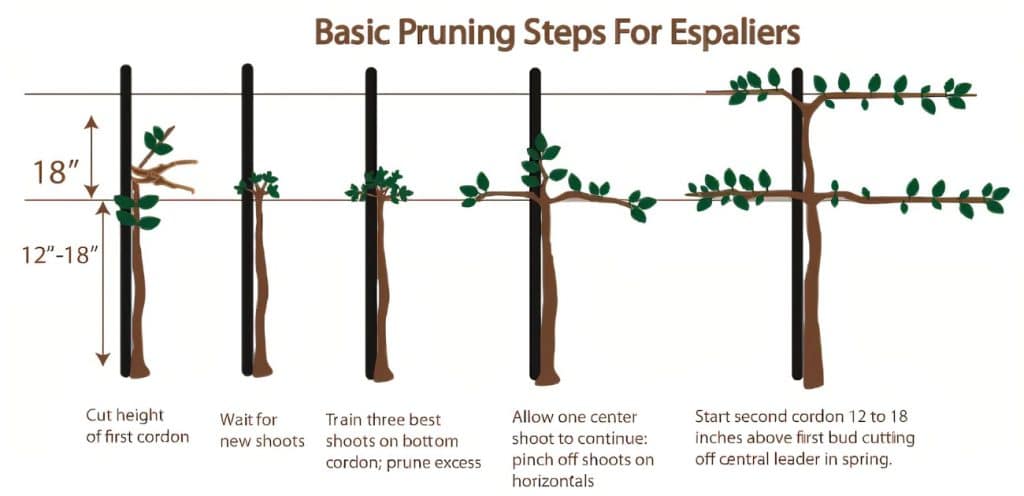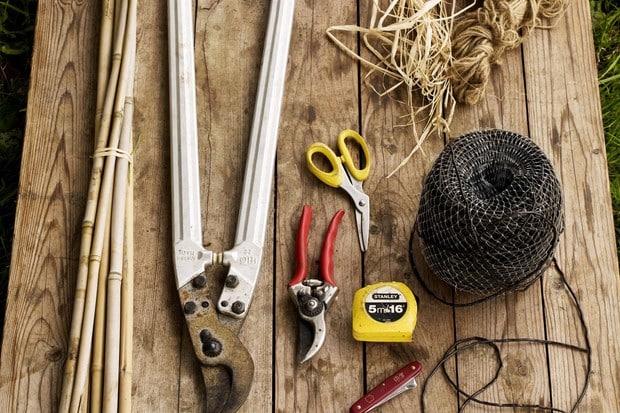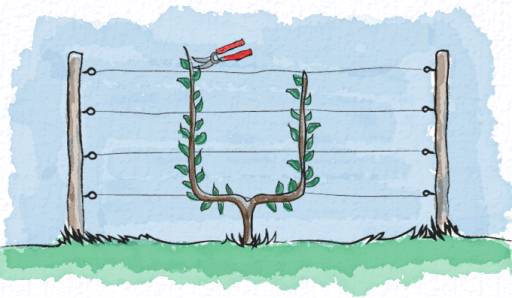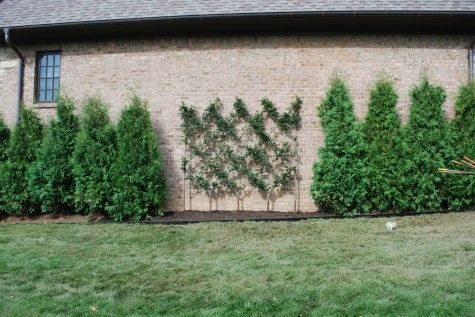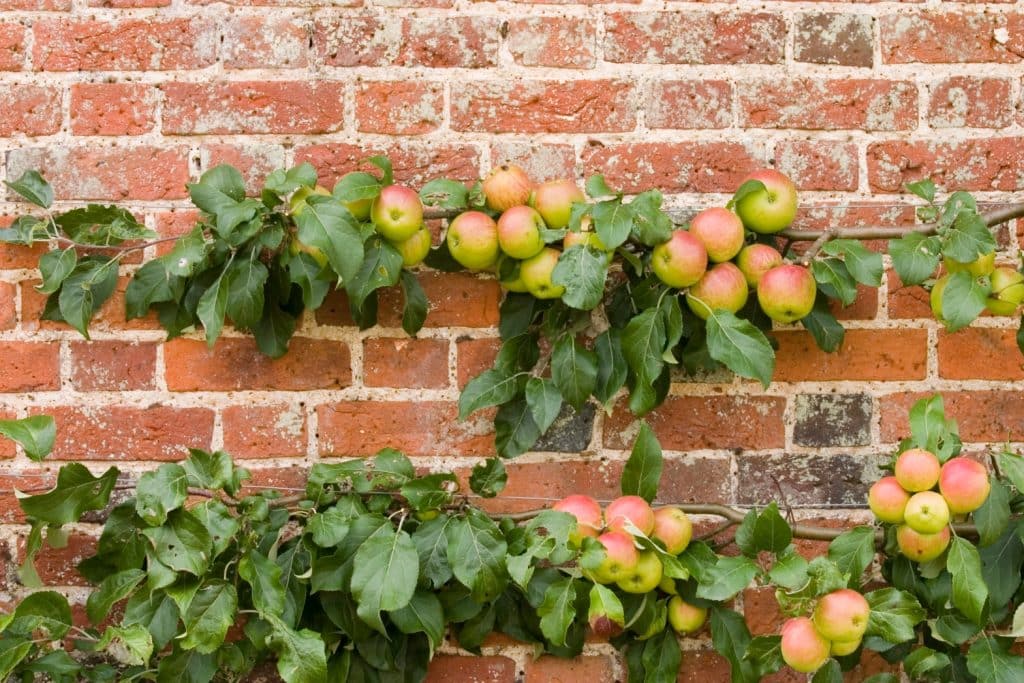The art of espalier is a horticultural practice that dates back to ancient Rome and has been refined over the centuries, particularly in European gardens. Espalier involves training fruit trees or other woody plants to grow in a flat, decorative pattern against a wall, fence, or trellis. This technique not only adds a unique and eye-catching element to your garden but also serves practical purposes, such as saving space and increasing fruit yield. In this blog post, we’ll explore the basics of espalier, discuss various patterns and designs, and provide tips for creating and maintaining your espalier masterpiece.
Contents
The Basics Of Espalier
In warmer climates, many fruit trees are suitable for espalier, including apples, pears, plums, cherries, and even citrus trees. These trees thrive in well-drained soil, with plenty of sunlight and proper airflow. When selecting a tree for espalier, consider its growth rate and habit, as well as your climate and available space. Dwarf or semi-dwarf varieties are often ideal, as they are more compact and manageable.
The basic principles of espalier involve providing a sturdy support structure, such as a wall, fence, or trellis, and training the branches to grow along the desired pattern. This process requires patience and regular pruning and tying of the branches. Pruning is essential for controlling growth, encouraging fruit production, and maintaining the desired shape. It’s typically best to prune in late winter or early spring before new growth emerges and to make additional pruning cuts throughout the growing season as needed.
Creating Your Own Espalier Masterpiece
Before you begin, research various espalier designs and patterns to determine which suits your space, style, and tree variety. Popular patterns include the cordon, fan, and Belgian fence, each with a unique aesthetic and complexity. Sketch your design, and take measurements to ensure it fits your space.
Choose a location with ample sunlight and good drainage to prepare your space for espalier. Install a support structure, such as a trellis or horizontal wires, to guide the tree’s growth. Plant your tree at least 8-12 inches from the support for proper air circulation and root development. Once planted, begin training the branches by gently bending and tying them to the support structure, following your chosen pattern.
Types Of Espalier Patterns
The cordon pattern is one of the simplest espalier designs, consisting of a single, vertical stem with short, horizontal branches. This pattern is well-suited for small spaces and can be easily adapted to create multiple cordons in a row. As the name suggests, the fan pattern involves training the branches to radiate outward in a fan-like shape. This design is ideal for showcasing the tree’s natural form and works well with trees with a spreading habit.
The Belgian fence is a more intricate espalier pattern, created by planting several trees in a row and training their branches to form a diagonal lattice. This design requires more precise pruning and training, but the result is a stunning, geometric display that can serve as a focal point or natural barrier within your garden.
Essential Tools And Equipment
You’ll need a few essential tools and supplies to successfully create and maintain your espalier. Pruning shears, both bypass and anvil types, are necessary for making clean, precise cuts on branches of various sizes. Plant ties, such as soft twine or reusable rubber ties, secure branches to the support structure without causing damage. The support structure, such as a trellis, fence, or wires anchored to posts, must be sturdy and able to withstand the tree’s weight as it grows.
Additional equipment, such as a ladder for accessing taller branches and gardening gloves for protecting your hands, can make the process of pruning and training your espalier safer and more comfortable. These tools and supplies will ensure that you’re prepared to properly care for your espalier and enjoy its beauty for years.
Espalier Maintenance And Care
Regular pruning is a crucial aspect of espalier maintenance, as it helps control growth, maintain the desired shape, and promote fruit production. Prune your espalier during its dormant season, typically in late winter or early spring, to remove dead, damaged, or crowded branches. Make additional pruning cuts as needed throughout the growing season to maintain the pattern and prevent overcrowding.
Aside from pruning, proper watering and feeding are essential for keeping your espalier healthy and productive. Provide consistent moisture, especially during dry spells, and apply a balanced, slow-release fertilizer in the spring to encourage strong growth. Monitor your espalier for common pests and diseases, such as aphids, scale insects, and powdery mildew, and address any issues promptly with appropriate treatments to ensure the long-term health of your tree.
Espalier In Small Spaces
Espalier is an ideal technique for small gardens, balconies, and terraces, as it allows you to grow fruit trees in a compact, space-saving form. To create an espalier in a limited space, consider using a dwarf or semi-dwarf tree variety, which has a smaller mature size and is easier to manage. Select a pattern that fits your space and desires aesthetic, such as a simple cordon or a more elaborate fan.
When growing espalier in a small space, it’s important to ensure proper air circulation and sunlight exposure to prevent disease and encourage fruit production. Be mindful of your tree’s growth, and regularly prune and train the branches to maintain a compact, tidy form that works within the constraints of your space.
Maximizing Fruit Production
Proper espalier training and care can significantly increase fruit yield by promoting a more open, well-lit canopy that encourages fruit set and ripening. To optimize fruit production, maintain a balanced tree structure with evenly spaced branches, and remove any excess foliage that may shade the developing fruit.
Cross-pollination is another factor that can impact fruit yield in espalier trees. Some fruit tree varieties are self-fertile, meaning they can produce fruit without the presence of another tree for pollination. However, many varieties benefit from cross-pollination, in which pollen from one tree is transferred to another, resulting in a better and larger fruit set. If you’re growing a variety that requires cross-pollination, consider planting a compatible pollinator nearby or incorporating multiple varieties within your espalier design.
Espalier As A Decorative Garden Feature
In addition to providing fresh fruit, espalier trees can serve as a striking decorative element in your garden or outdoor space. With their sculptural forms and intricate patterns, espalier trees can create focal points, define garden rooms, or serve as a backdrop for other plantings.
Get creative with your espalier design by incorporating multiple tree varieties, experimenting with different patterns, or even using espalier to create natural screens or garden dividers. The possibilities are endless, and with some imagination and dedication, your espalier masterpiece can become a functional and aesthetic centerpiece in your garden.
The Bottom Line
Espalier is a beautiful and practical way to grow fruit trees in various settings, from small urban gardens to expansive estates. By understanding the basics of espalier, selecting the appropriate pattern and design, and providing proper care and maintenance, you can enjoy the aesthetic and practical benefits of espalier in your garden. Whether you’re interested in creating a simple cordon or an elaborate Belgian fence, the art of espalier offers endless possibilities for transforming your outdoor space into a stunning and fruitful oasis. Embrace this ancient horticultural technique and enjoy the process of creating your espalier masterpiece.
